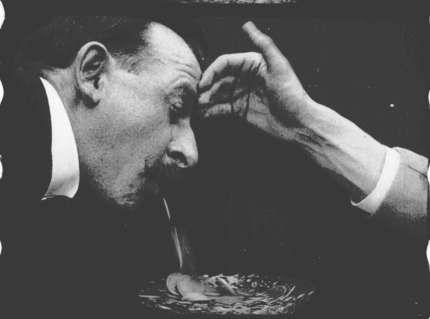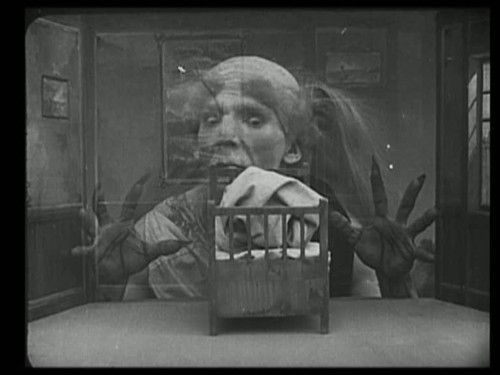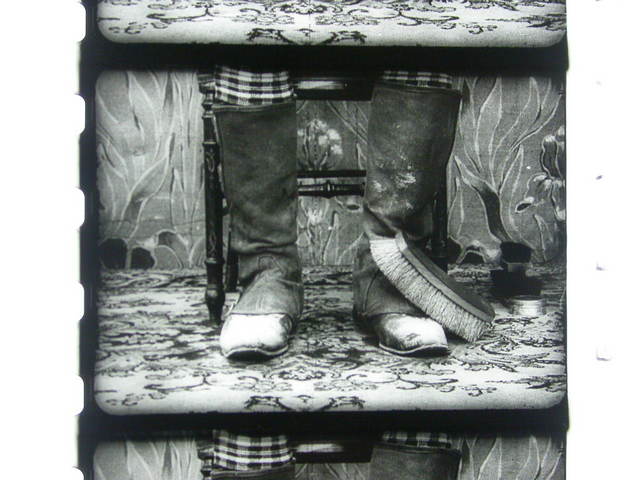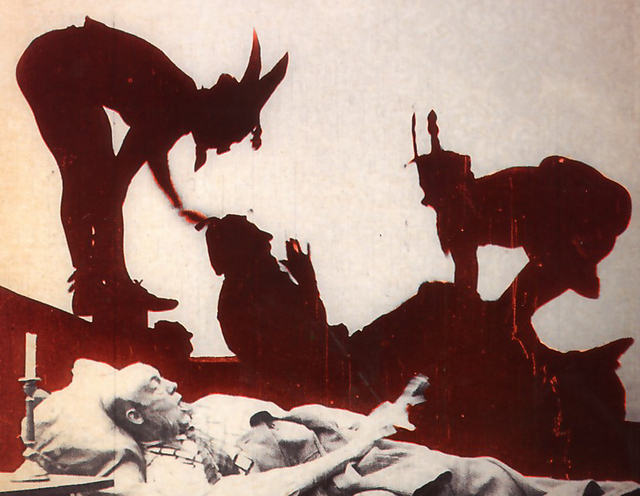The strange and very old relationship of Spain with the fantastic...

Do you know Segundo de Chomón and Ruiz?
(Teruel, Spain 1871- Paris, France 1929)
He was one of the pioneer directors of silent cinema.
Director, lighting, and photographic technician, specialist in special effects and in developing films, pioneer of fantasy and animated film, he was one of the most prominent -and fascinating- figures of the first thirty years of the existence of cinematography and worked alongside some of the most important European directors of the period.
He was, along with the Lumière brothers, George Méliès and Charles Pathé, one of the pioneers of cinema history.
Impressed by the discovery of cinema, he traveled to Paris in 1897 to study the magnificent invention closely. On his return to Barcelona he founded a studio for the coloring of films. In 1906, he was hired by the French company Pathé, for which he directed over 100 short films.
Chomón began working in the studio almost immediately, a prelude to what would become one of his biggest obsessions until his death: the color film. His skill and dedication led him to devise, shortly after, a revolutionary hand-colored system known as "pochoir", which later, with slight changes, was patented by Charles Pathé under the name Pathécolor.
Chomón worked tirelessly on new technical discoveries and special effects that he later applied to his fantasy films. His collaborations on myths of silent film as the director of photography in Pastrone's Cabiria (1914) or Gance's Napoleon (1927) earned him the nickname of "the Spanish Méliès'.
Film pioneer, he applied his vast imagination to the development of the new medium. He founded the first Spanish film production company «Macaya y Carro» and a coloring and labeling workshop where he experienced with the first scientific films.
In his early years in Spain, Chomón actively participated in modernist performances that incorporated cinema to other art forms.
The birth of an art form
Investigating the connections between cinema and theater, Chomón experienced in these shows with the possibilities of sound cinema, with a group of actors hidden behind the screen putting voice and sound to the projected images.
With Eclipse de sol (1905), Chomón creates in Spain the "step crank", which is, the shooting frame by frame, allowing the alteration of the position or the disappearance of the objects located in front of the camera, during the shooting intervals.

This may seem silly, but it's not.
The official year of the birth of cinema is 1895, but the birth of animated cinema happened about ten years later, in 1905. Segundo de Chomón and James Stuart Blackton share the credit for creating the animation as such, but "Humorous Phases of Funny Faces" by Blackton is from 1906 and "Eclipse de Sol" by Chomón from 1905.
Blackton made his film for Vitagraph, in which you saw inanimate objects moving by themselves. The film had a lot of success in the U.S. and soon arrived to France, where there was surprise and enthusiasm. The French producers, on seeing the movie "The Haunted Hotel", were astonished at the prodigy, which at once they named American movement. Léon Gaumont mobilized his technicians to discover at all costs the system which achieved such amazing games. Pathé, however, didn't have to worry, because it was Segundo de Chomón the inventor of the marvelous scene. What the Americans called "one turn, one picture" and what the Italians would call without delay "around one" was the "step crank" created by Chomón.
The autumn of the same year, 1905, Chomón returns to Paris. He was hired by Pathé to compete with Georges Méliès directing various fantasy films.
Chomón will find at Pathé everything necessary to investigate and implement his technical innovations and his passion for experimentation, ranging from the shooting frame by frame, the overhead shots and the inverted and chained movements, the use of caches, the different proportion shots and the overlays.
The freedom Chomón had at Pathé and the exceptional working conditions of the company (starting with the very low cost of unexposed film) largely explain the frenetic activity of the Spanish filmmaker in various fields, not only in two of the most successful genres at the time, such as "phantasmagorical" films and the transformation scenes, but also in the field of animation, with titles like "El castillo encantado" (The Enchanted Castle) 1908 and "El sueño del cocinero" (The cook's dream) 1909, the action figures and shadow plays, section that highlights "Ladrones nocturnos" (Nocturnal Thieves) 1905 or "La casa hechizada" (The haunted house) 1906, precursor film of transparencies, technique that consists in projecting images on a screen behind the actors.
A little Filmmaking...
As a director or as an operator and responsible of special effects for other directors of the company, Chomón's work at Pathé shines especially in the fantasy films, "phantasmagorical" films (sometimes called "fairy") populated by witches, devils, hell, dragons and caves, ghosts, castles, monsters and nightmares, and also in the 'transformations' films, more cheerful and colorful, more positive atmospheres and characters, with fairies, Arabic fantasies, planetary trips, oriental acrobats and floral apotheosis.
These include especially "La gallina de los huevos de oro" (The goose that lays golden eggs) of Albert Capellani, 1905, "El hijo del Diablo" (The son of the Devil) of Charles Lucien-Lépine, 1906, "Satán se divierte" (Satan has fun) 1907 and "El hotel eléctrico" (The Electric Hotel) 1908, heavily influenced by American James Stuart Blackton's anterior work, "The haunted hotel" (1907).
The technical work of Chomón shines also alone in the monumental recreating of the passion of Jesus Christ produced by Pathé at the same time, "La vie et la passion de Nôtre Seigneur Jesuschrist" (Lucien Nonguet, 1906-1907), consists of 43 different pictures (scenes). Chomón was responsible of all the special effects with moments very well-done for the time, as the image of Jesus walking over water, the transfiguration, the ascension or the annunciation to the shepherds, and also the photography and the camera movements, getting to perform various dollies by mounting the camera on roller skate wheels.
From 1912 he worked in Italy, in Itala Film. The artistic side of the production was handled by director Giovanni Pastrone (1883-1959), who hired Chomón as an operator and special effects technician for the exorbitant sum of a thousand liras a month (the highest-paid operators were paid in Italy at the time just over a 150 liras a month).
Not only does Chomón have absolute freedom, but he's the director of his own technical team, consisting of four people, and focused specifically on the photography, lighting and special effects work of the productions of the directors of the company, with Pastrone which stands out above all, head of one of the biggest blockbusters of the Italian silent film, "Cabiria" (1914), three-hour film set in the late third century B.C. In Cabiria, Chomón is responsible not only of conducting and filming models, of the most complicated lighting effects, special effects and main tasks of developing and printing, but also the camera moves.
The systematic and elaborated use of the "carrello" (the original dolly), ie, the moving camera, is one of the main distinctive features of Cabiria, thus showing a change of attitude towards visual logic adopted by cinema until then and resulting in what many critics and historians have called "the conquest of space", which seemed to be Chomón's real obsession, carrying the artistic boundaries of the medium of expression "cinema" as far as his mind told him it could expand.
But for Chomón there were no Frontiers
He practiced and innovated all kinds of special effects. He was one of the fathers of animation, creator of "Stop Motion", the first that made scientific and historical reconstruction cinema, invented the persecution humor genre, used with great success the union between real image and models, the overlays on transparent backgrounds, built specialized cameras, developed the animation technique, colored by hand, frame by frame, designed celluloid templates that facilitated this work and obtained a more precise delimitation of color, invented the dolly he first used in "La Vie et la Passion de N.S. Jésus-Christ" (1903) where he was director of photography and changed the way of using the camera in film photography, the aesthetic application of artificial light, which serves mainly in Cabiria to "model" the faces of the actors and create a determined atmosphere or certain special effects, as the one coming from the illumination of the base of a set of normal dimensions, the functional use of the pan, the steady rhythm of the film footage, in his film "La licuefacción de los cuerpos duros" (Liquefying the hard bodies) from 1909, you can see an actor deforming himself and becoming first a wire puppet and at the end a mass, being a precursor of modern "morphing" on computer, he works on a cinema system in color by alternating two-color print, which means for him the gold medal of the International Exhibition of Photography, Film Optics of Turin. Segundo de Chomón was the greatest special effects master and one of the greatest filmmakers, before the first world war.
The Electric Prodigy
Considered by many the first science fiction film "El hotel eléctrico" (The Electric Hotel) 1905 (one of Chomón's masterpieces), posed many difficulties. We are in times of advanced techniques and in this hotel the servants service has been suppressed. Everything is done by machines. A button is pressed and hands appear handling a brush to shine the shoes, another button undoes the luggage, another one dresses the gentleman. Electricity is the magic that makes man's work. Humor and wit (also wonder), were the most marked peculiarities of El hotel eléctrico, shot in Barcelona in 1906.

About 10 minutes long, it's Chomón's most famous film, and collects the best part of his repertoire of tricks, many of which continue to result surprising today. The film features a couple who come to a revolutionary hotel where everything is done automatically: the luggage goes alone, the elevator too, and from the elevator to the room: scarves, shirts and pants are placed neatly in the closet, the man's shoes are undone by themselves and are cleaned with a brush equipped with its own life, a comb combs a woman's hair by itself (played by Chomón's wife, Julienne).
Things start to go wrong, however, when the hotel operator in charge of the animation of objects begins to manipulate the controls under the influence of alcohol and the hotel becomes a madhouse in which all objects move alone.
It seems "El Hotel Electrico" is a copy argumentation wise of "Haunted Hotel" (1907) by Blackton but let's keep in mind the big technical difference between both, one lasts 1 minute without real actors, "Hotel Electrico" lasts 9 and includes human actors, and the fact "Haunted Hotel" is inspired by the most complex feature film "Haunted Mansion" from 1906 also created by Segundo de Chomón.
"John Doe" Chomón
Why is Chomón's work really unknown?
It's got nothing to do at all with his Spanish origin, as most of his work was developed in France, well perhaps it's an issue more related to the period. Also, he worked in a part of film history, when the director's name didn't appear in the film's credits So sometimes it's quite difficult to determine which films Chomón directed or which he participated in, as this is an era prior to today's officially established idea of "Filmmakers", "authors" and others.
This is the era before Chaplin when there were "technicians" not filmmakers, so a lot of production credits can, and do, slip through the cracks.
In his last years, Segundo de Chomón continued innovating in the field of color film, creating inventions and developing his career at the same time as a cinematographer and special effects technician in films like "La bataille" (The Battle) from 1924 by Edouard-Emile Violet, "J'ai tuè!" (I killed him!) of 1924 by Roger Lion or Napoleon (1926) by Abel Gance.

But here is the part of Chomón's work we can actually admire and enjoy, with an influence extended from the past going onto influencing movements, like surrealism, clearly developed in France but also "given birth" by Spanish authors like Buñuel and his "Un Chien Andalou".
I hope you have fun with you the history of this master of fantastic films lost in the memories of the history of celluloid...
Enjoy Segundo De Chomón's work in places like Archive.org







